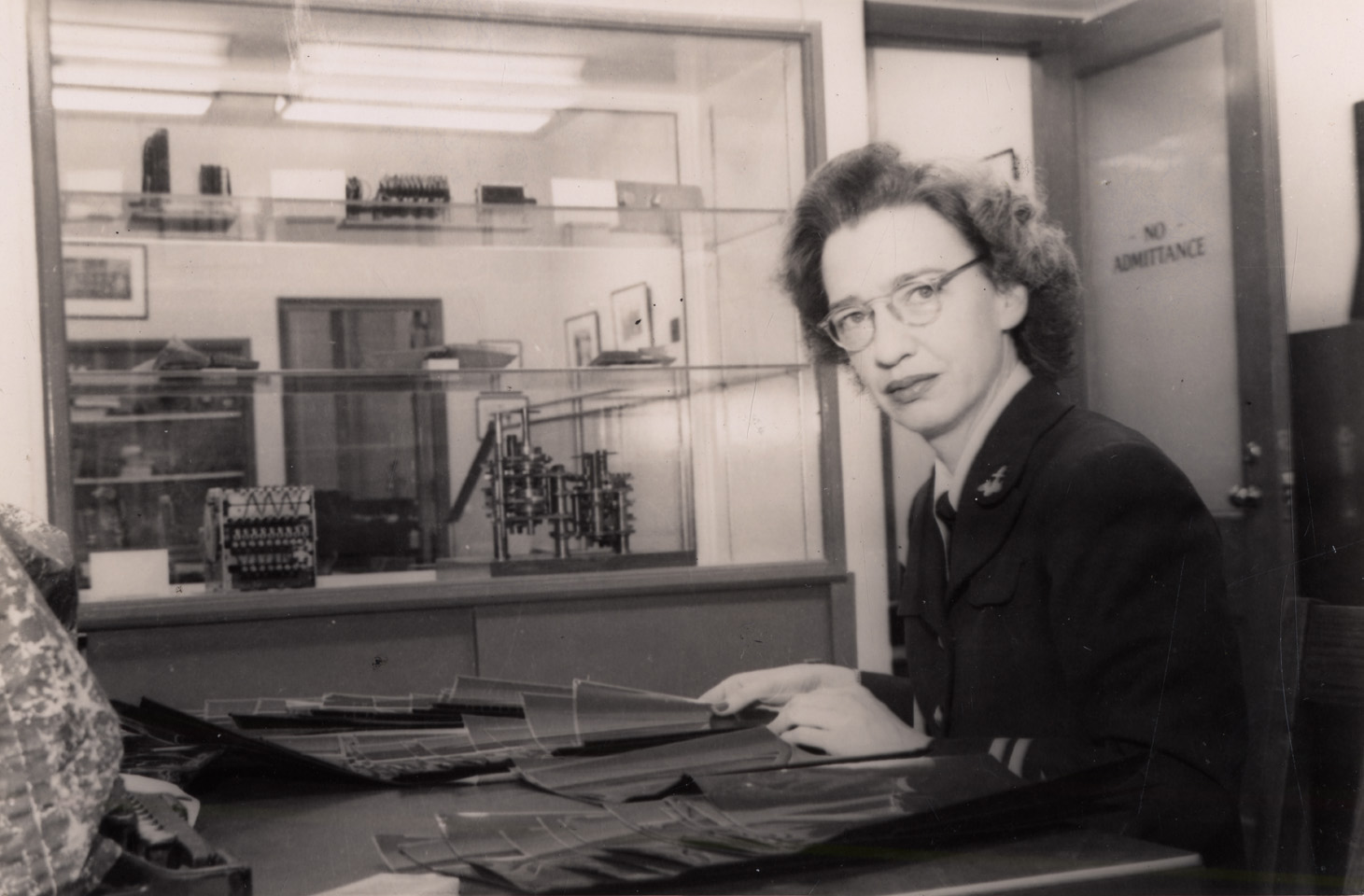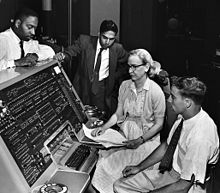Grace Hopper lived a pioneering life in fields dominated by men. The Navy Rear Admiral and computer programming early adopter was known to many as "Amazing Grace."
A curious child, Grace Murray at age 7 dismantled a series of alarm clocks to see how they worked. She kept that curiosity and scientific bent throughout her schooling, graduating from Vassar with a bachelor's degree in mathematics and physics and then from Yale with a master's degree in math and, ultimately, a Ph.D, also in math. She taught math at Vassar beginning in 1931. The year before, she had married New York University professor Vincent Hopper.
 Vassar granted Grace's application for a leave of absence in 1943, during World War II, and she joined the Navy Reserve, as a member of the Women Accepted for Volunteer Emergency Service (WAVES). She attended the Naval Reserve Midshipmen's School and graduated the following year, as head of her class.
Vassar granted Grace's application for a leave of absence in 1943, during World War II, and she joined the Navy Reserve, as a member of the Women Accepted for Volunteer Emergency Service (WAVES). She attended the Naval Reserve Midshipmen's School and graduated the following year, as head of her class.
Assigned to the Bureau of Ships Computation Project at Harvard, Grace was one of several computing pioneers who worked on the project that created Mark I, the name that Harvard staff gave to the Automatic Sequence Controlled Calculator (ASCC). That computer computed and printed mathematical tables and also did some calculations for the Manhattan Project, the group of scientists who built the atomic bomb.
After the war, Hopper went to work for the Eckert-Mauchly Computer Corporation, which was working on one of the next innovations in computing, UNIVAC I, versions of which helped compute the national census and the results of the 1952 presidential election.
 Hopper's work led to the creation of the original compiler, a computer program that transforms source code into an executable program, in another words taking high-level code and translating it to low-level code, for use on a lower level computer. Her perseverance convinced a skeptical sector that computers could be programmed to understand English-like statements. The first compiler was named A-0; its most successive iteration was the A-2. An upgrade was the B-0, which gained the name FLOW-MATIC, which could be used for business applications like payroll.
Hopper's work led to the creation of the original compiler, a computer program that transforms source code into an executable program, in another words taking high-level code and translating it to low-level code, for use on a lower level computer. Her perseverance convinced a skeptical sector that computers could be programmed to understand English-like statements. The first compiler was named A-0; its most successive iteration was the A-2. An upgrade was the B-0, which gained the name FLOW-MATIC, which could be used for business applications like payroll.
The Remington Rand company had purchased Eckert-Mauchly, and Hopper's promotion in 1954 made her the company's first director of automatic programming. In this capacity, she made large contributions to the development of COBOL, one of the first languages used by business computers.
Part 2: Retirement and Fame